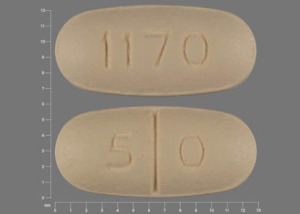Naltrexone and Alcohol/Food Interactions
There is 1 alcohol/food/lifestyle interaction with naltrexone.
Naltrexone Alcohol (Ethanol)
Moderate Drug Interaction
GENERALLY AVOID: Coadministration of naltrexone with other agents known to induce hepatotoxicity may potentiate the risk of liver injury. Naltrexone, especially in larger than recommended doses (more than 50 mg/day), has been associated with hepatocellular injury, hepatitis, and elevations in liver transaminases and bilirubin. Other potential causative or contributory etiologies identified include preexisting alcoholic liver disease, hepatitis B and/or C infection, and concomitant usage of other hepatotoxic drugs.
MANAGEMENT: The use of naltrexone with other potentially hepatotoxic agents should be avoided whenever possible (e.g., acetaminophen; alcohol; androgens and anabolic steroids; antituberculous agents; azole antifungal agents; ACE inhibitors; cyclosporine (high dosages); disulfiram; endothelin receptor antagonists; interferons; ketolide and macrolide antibiotics; kinase inhibitors; minocycline; nonsteroidal anti-inflammatory agents; nucleoside reverse transcriptase inhibitors; proteasome inhibitors; retinoids; sulfonamides; tamoxifen; thiazolidinediones; tolvaptan; vincristine; zileuton; anticonvulsants such as carbamazepine, hydantoins, felbamate, and valproic acid; lipid-lowering medications such as fenofibrate, lomitapide, mipomersen, niacin, and statins; herbals and nutritional supplements such as black cohosh, chaparral, comfrey, DHEA, kava, pennyroyal oil, and red yeast rice). Patients should be advised to seek medical attention if they experience potential signs and symptoms of hepatotoxicity such as fever, rash, itching, anorexia, nausea, vomiting, fatigue, malaise, right upper quadrant pain, dark urine, pale stools, and jaundice. Periodic monitoring of hepatic function is advisable.
References (1)
- (2001) "Product Information. ReVia (naltrexone)." DuPont Pharmaceuticals
Switch to consumer interaction data
Naltrexone drug interactions
There are 355 drug interactions with naltrexone.
Naltrexone disease interactions
There are 2 disease interactions with naltrexone which include:
More about naltrexone
- naltrexone consumer information
- Check interactions
- Compare alternatives
- Pricing & coupons
- Reviews (603)
- Drug images
- Side effects
- Dosage information
- Patient tips
- During pregnancy
- Support group
- Drug class: antidotes
- Breastfeeding
Related treatment guides
Drug Interaction Classification
| Highly clinically significant. Avoid combinations; the risk of the interaction outweighs the benefit. | |
| Moderately clinically significant. Usually avoid combinations; use it only under special circumstances. | |
| Minimally clinically significant. Minimize risk; assess risk and consider an alternative drug, take steps to circumvent the interaction risk and/or institute a monitoring plan. | |
| No interaction information available. |
See also:
Further information
Always consult your healthcare provider to ensure the information displayed on this page applies to your personal circumstances.


